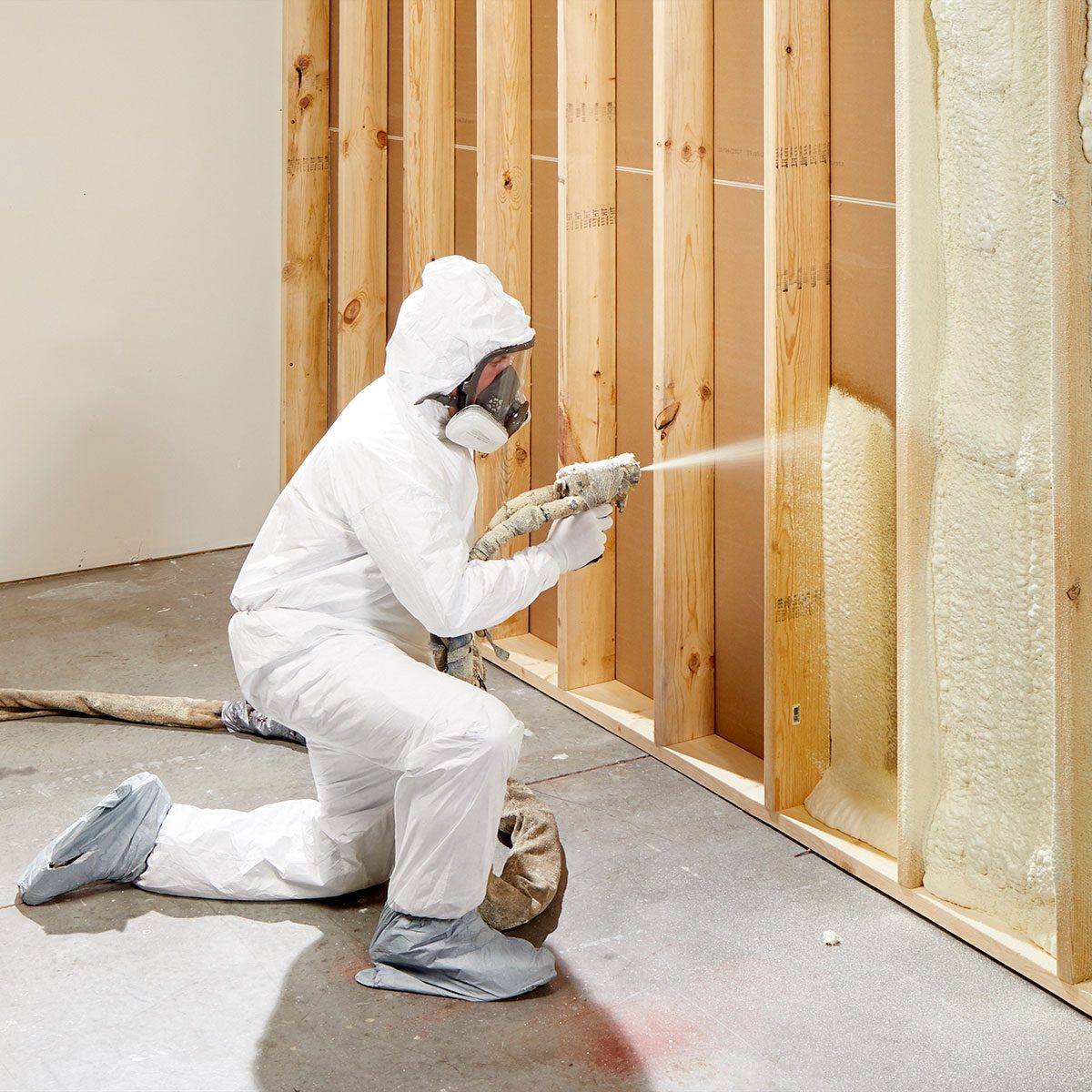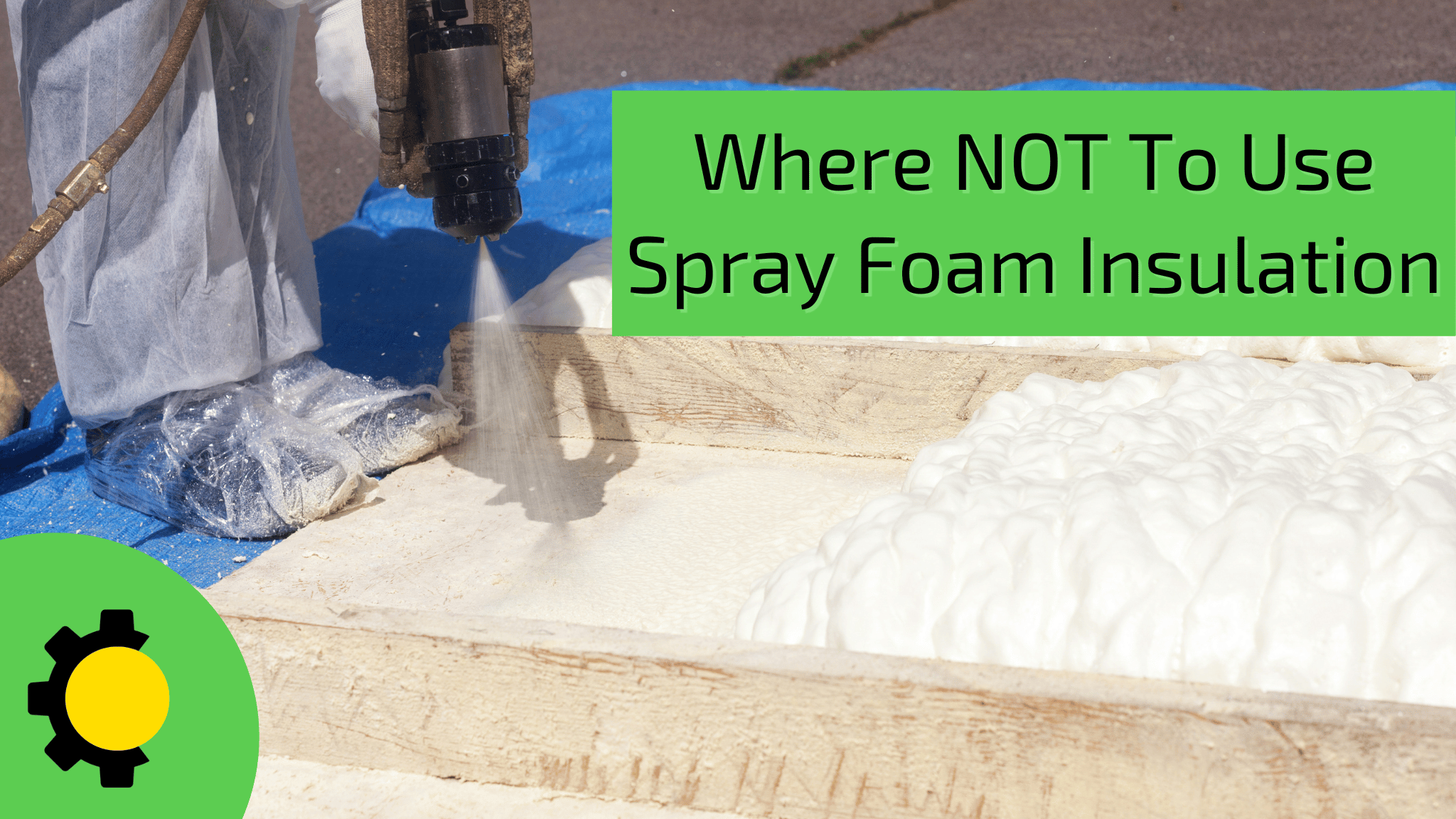Spray Foam: The Ultimate Solution for Air Sealing and Insulation
Spray foam insulation has actually arised as a leading solution for effective air securing and thermal insulation, supplying an unique combination of buildings that establish it aside from standard approaches. Its capacity to expand and fill spaces makes it especially reliable in protecting against air leakage, which can considerably affect energy effectiveness. Recognizing the complete range of its advantages, setup procedures, and contrasts with various other insulation kinds is vital for making educated choices. As we check out these elements, the ramifications for both new buildings and retrofits end up being progressively considerable. What elements should influence your choice?
What Is Spray Foam?
Spray foam is a flexible insulation material that combines the concepts of air sealing and thermal resistance to boost power efficiency in structures. Made up primarily of polyurethane or various other similar compounds, spray foam is used as a liquid that increases upon call with surfaces, developing a solid, continuous layer of insulation. This one-of-a-kind property enables it to fill voids, cracks, and gaps that typical insulation materials might ignore, providing a premium air seal.
There are two major types of spray foam: open-cell and closed-cell. Open-cell spray foam is lighter and more versatile, offering exceptional sound absorption and a reduced R-value per inch - Spray Foam. In contrast, closed-cell spray foam is denser, supplying a higher R-value, wetness resistance, and included structural honesty to building elements
The application procedure usually entails specialized tools, ensuring a seamless application that sticks to various substrates, consisting of timber, concrete, and steel. This adaptability makes spray foam appropriate for both brand-new building and constructions and retrofitting existing structures. Its capability to develop an airtight barrier substantially adds to decreasing energy usage and boosting indoor air quality, consequently making it a recommended selection among home builders and home owners alike.
Benefits of Spray Foam Insulation
Among one of the most substantial benefits of spray foam insulation is its extraordinary capability to produce a continual air obstacle, which properly decreases power loss. Unlike typical insulation products, spray foam increases to load gaps and splits, making sure that air leakage is considerably minimized. This characteristic not only improves energy efficiency but also leads to lower utility expenses over time.
In addition, spray foam insulation supplies superior thermal resistance, adding to a much more secure interior environment. Its high R-value per inch permits effective insulation in constrained areas, making it perfect for attic rooms, wall surfaces, and crawl spaces. Additionally, the moisture-resistant residential or commercial properties of spray foam assistance protect against mold and mold growth, promoting much healthier living problems.
One more crucial advantage of spray foam insulation is its sound-dampening high qualities (Spray Foam). It properly reduces noise transmission between rooms, producing a quieter and much more comfortable home setting. The resilience of spray foam also attracts attention, as it does not sag or settle over time, maintaining its efficiency throughout its life expectancy
How Spray Foam Works
Understanding just how spray foam insulation functions is important for appreciating its performance in air securing and thermal resistance. Spray foam insulation is composed of 2 key parts: isocyanate and polyol material. When these components are combined, they go through a chain reaction that creates the product to increase swiftly, creating a thick foam that fills up dental caries, voids, and splits.
As the foam expands, it sticks to surface areas, forming a closed seal that substantially minimizes air seepage. This particular makes spray foam insulation very effective at protecting against drafts and wetness infiltration, which can bring about energy loss and damage over time. Additionally, the closed-cell variant of spray foam supplies exceptional thermal resistance because of its stiff structure, effectively reducing warm transfer.
The distinct homes of spray foam allow it to comply with uneven surfaces, making certain extensive protection and a smooth obstacle. As a result, spray foam insulation not just boosts energy efficiency yet additionally adds to improved indoor air top quality by lowering website link the build-up of irritants and toxins. Inevitably, comprehending the technicians behind spray foam underscores its role as a superior choice for insulation and air securing in both business and property applications.
Installment Refine Overview

Prior to installment, the space needs to be effectively cleaned and prepped, making certain that surface areas are without moisture, particles, and dust. Since contaminants can jeopardize bond and overall efficiency, this step is critical. As soon as the location is prepared, the application involves blending the 2 elements of the spray foam, which broadens upon contact and fills spaces successfully.
Trained professionals must conduct the installment, utilizing specialized equipment to ensure consistent insurance coverage and ideal thickness. Security safety measures, consisting of using safety gear and making sure correct air flow, are vital during this procedure. After application, the foam generally remedies quickly, forming a solid obstacle that improves power effectiveness.
Contrasting Spray Foam to Traditional Insulation
When evaluating insulation alternatives, spray foam insulation stands out in comparison to conventional materials such as fiberglass and cellulose. Unlike fiberglass and cellulose, which can allow air seepage, spray foam broadens upon application, loading gaps and gaps to develop a closed seal.
Furthermore, spray foam provides a higher R-value per inch than typical insulation types, offering even more effective thermal resistance in a thinner account. This particular is particularly useful precede with limited cavity depth. Spray foam is immune to wetness and mold and mildew development, which can be a significant problem with cellulose and fiberglass, especially in humid settings.
However, spray foam insulation typically brings a higher in advance cost than its standard equivalents. Home owners have to evaluate this first investment against lasting energy cost savings and efficiency benefits. Eventually, while both insulation types serve their function, spray foam arises as an advanced service for modern insulation requirements, specifically in terms of air securing and thermal efficiency.

Verdict
In summary, spray foam insulation represents a very reliable service for attaining optimal air securing and thermal resistance. Its one-of-a-kind buildings, including wetness resistance and audio dampening, make it ideal for different applications in both useful source brand-new constructions and retrofitting tasks (Spray Foam). The initial costs may be higher contrasted to typical insulation materials, the lasting advantages, such as considerable energy financial savings and enhanced interior air top quality, validate the financial investment and underscore its value in modern-day building techniques.
Spray foam insulation has actually arised as a leading solution for reliable air securing and thermal insulation, providing an unique mix of residential or commercial properties that set it apart from conventional techniques.Spray foam is a versatile insulation product that integrates the concepts of air securing and thermal resistance to enhance power performance in buildings.When reviewing insulation choices, spray foam insulation stands out in contrast to standard materials such as fiberglass and cellulose. Inevitably, while both insulation kinds serve their purpose, spray foam arises as a more innovative service for modern insulation requirements, specifically in terms of air securing and thermal effectiveness.
In recap, spray foam insulation stands for an extremely efficient service for accomplishing ideal air sealing and thermal resistance.